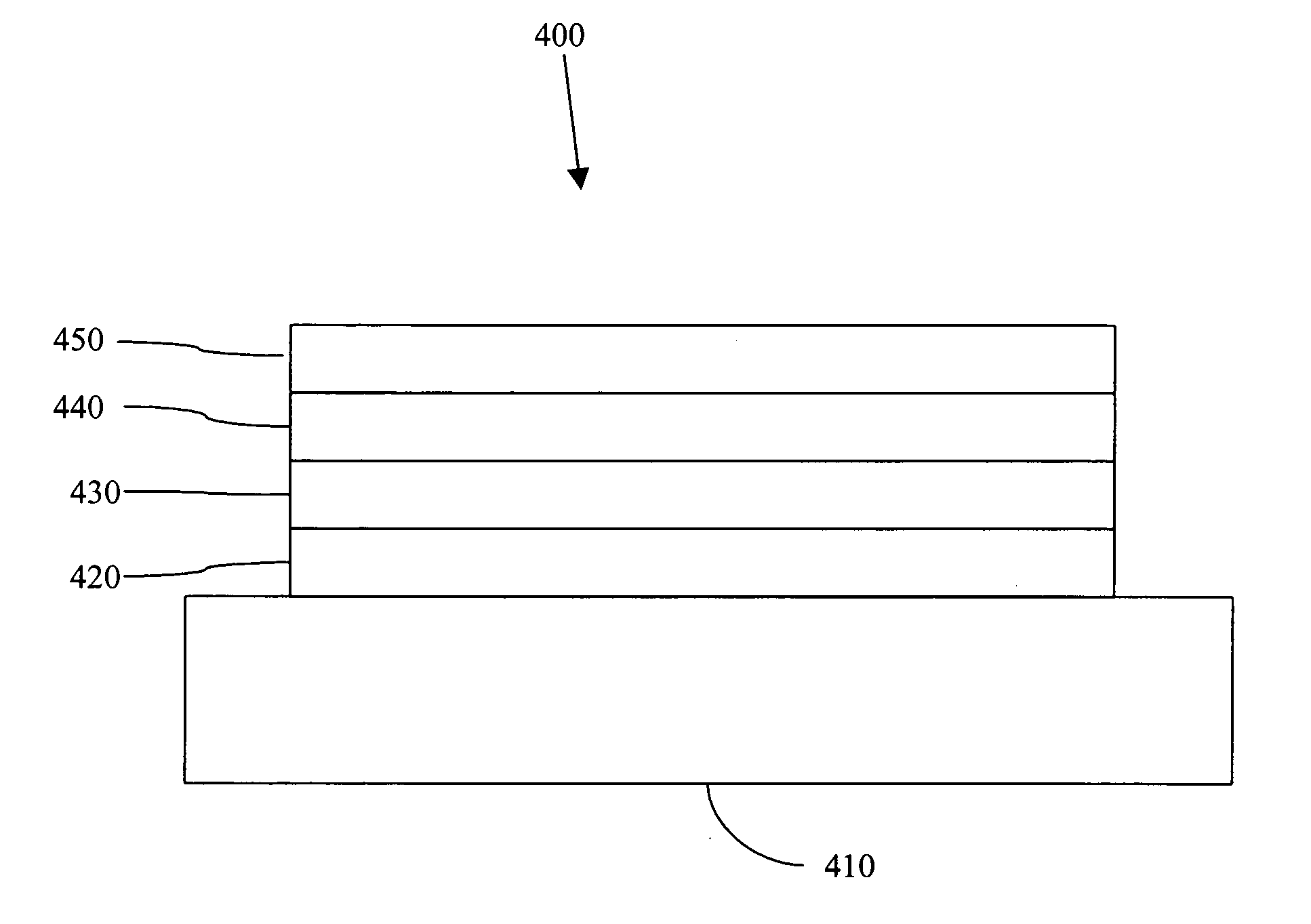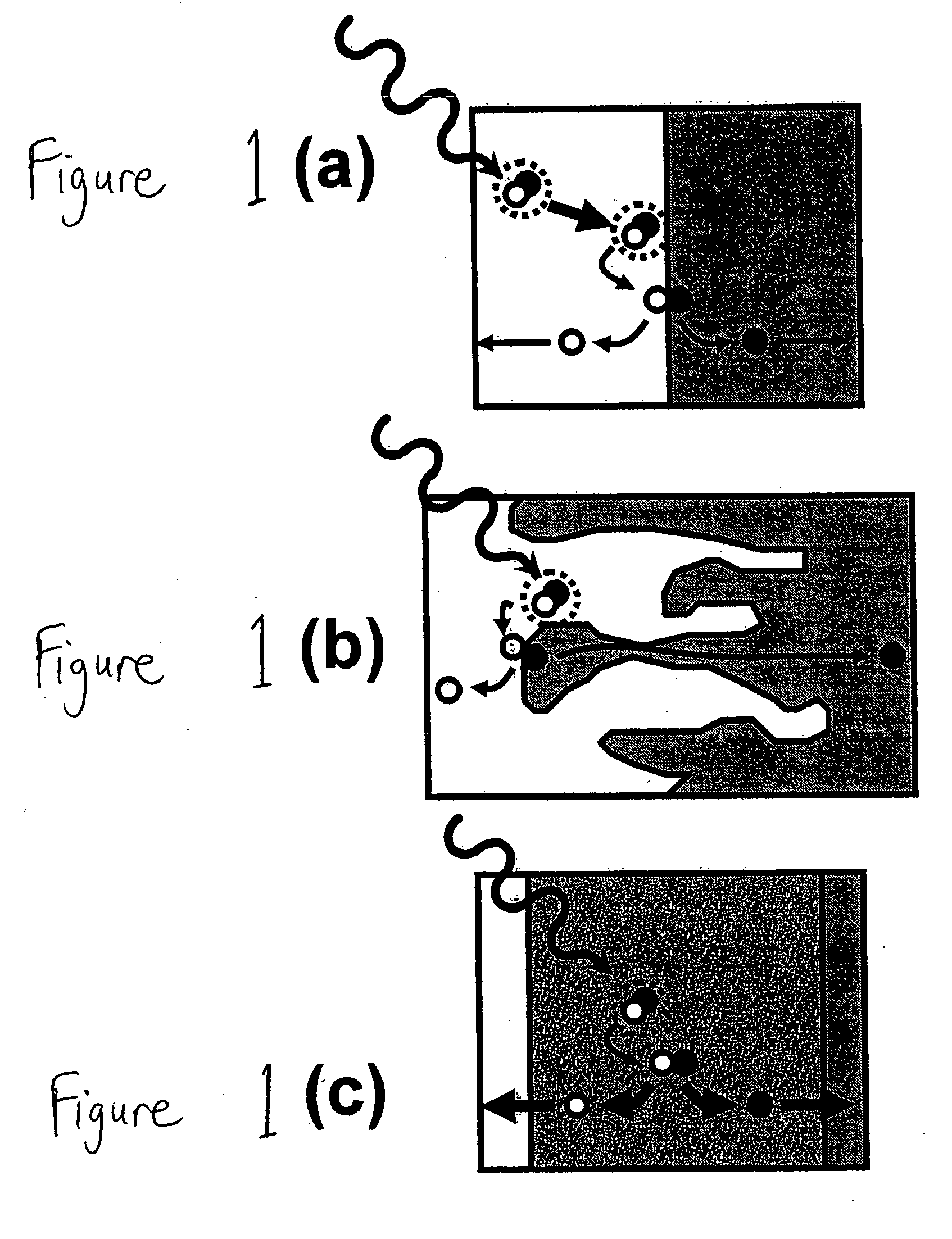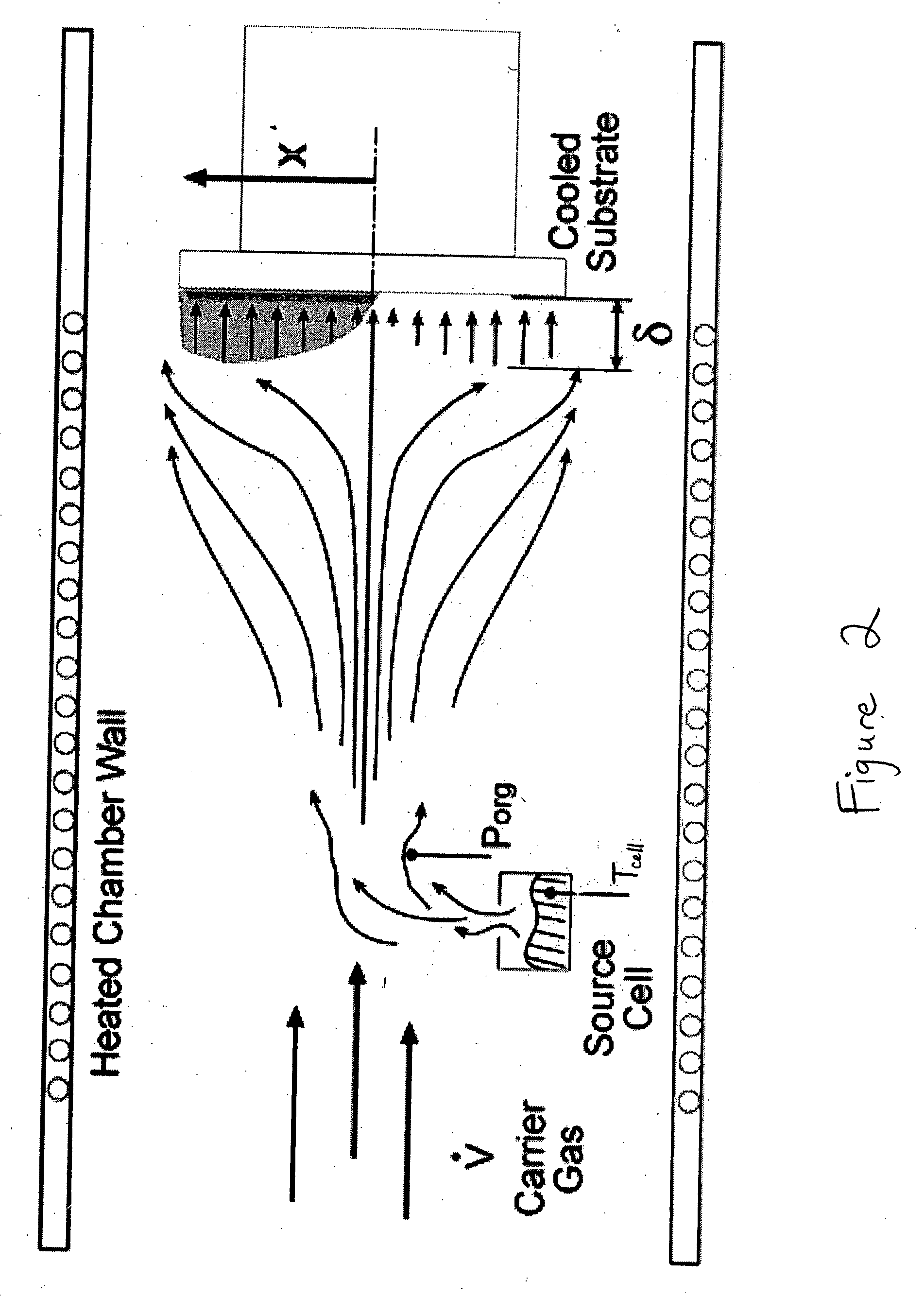Method of fabricating an optoelectronic device having a bulk heterojunction
a heterojunction and optoelectronic technology, applied in the direction of organic semiconductor devices, final product manufacturing, sustainable manufacturing/processing, etc., can solve the problems of high cost of electrical power produced per unit area, difficult and expensive production, and low efficiency of crystalline-based devices, etc., to achieve acceptable quantum yield and power conversion efficiency
- Summary
- Abstract
- Description
- Claims
- Application Information
AI Technical Summary
Benefits of technology
Problems solved by technology
Method used
Image
Examples
example 1
[0073] Organic vapor phase deposition was employed to deposit CuPc (an electron donor material) on silicon (a substrate) at an underlying substrate temperature of about 60° C. The deposited layer of CuPc had a high surface area-to-volume ratio, as can be seen in the scanning electron micrograph shown in FIG. 3(a).
example 2
[0074] Organic vapor phase deposition was employed to deposit CuPc (an electron donor material) on silicon (a substrate) at an underlying substrate temperature of about 100° C. The deposited layer of CuPc had a high surface area-to-volume ratio, as can be seen in the scanning electron micrograph shown in FIG. 3(b).
example 3
[0075] Organic vapor phase deposition was employed to deposit CuPc (an electron donor material) on indium-tin-oxide (an electrode) at an underlying substrate temperature of about 100° C. The deposited layer of CuPc had a high surface area-to-volume ratio, as can be seen in the scanning electron micrograph shown in FIG. 3(c).
PUM
 Login to View More
Login to View More Abstract
Description
Claims
Application Information
 Login to View More
Login to View More - R&D
- Intellectual Property
- Life Sciences
- Materials
- Tech Scout
- Unparalleled Data Quality
- Higher Quality Content
- 60% Fewer Hallucinations
Browse by: Latest US Patents, China's latest patents, Technical Efficacy Thesaurus, Application Domain, Technology Topic, Popular Technical Reports.
© 2025 PatSnap. All rights reserved.Legal|Privacy policy|Modern Slavery Act Transparency Statement|Sitemap|About US| Contact US: help@patsnap.com



